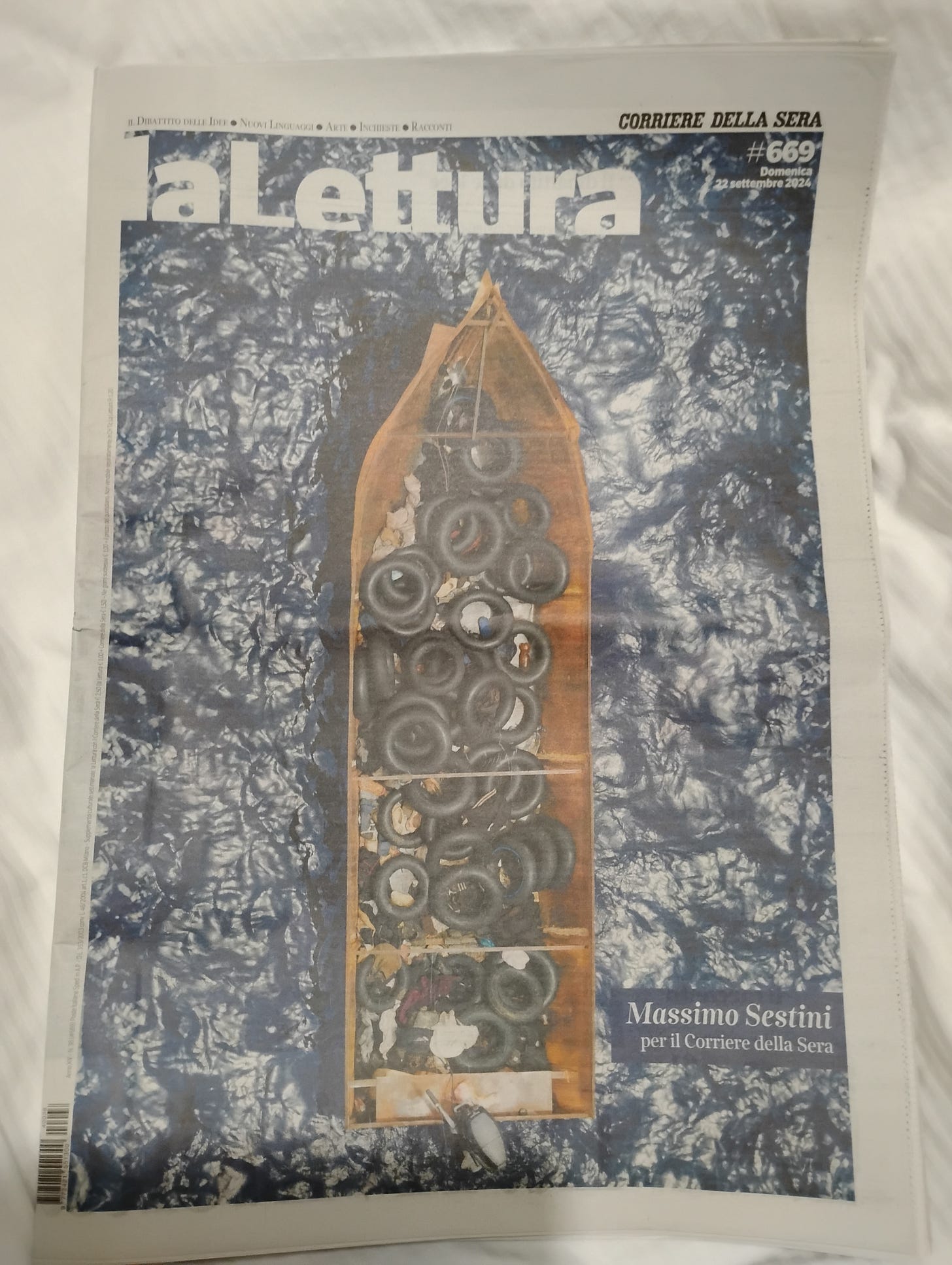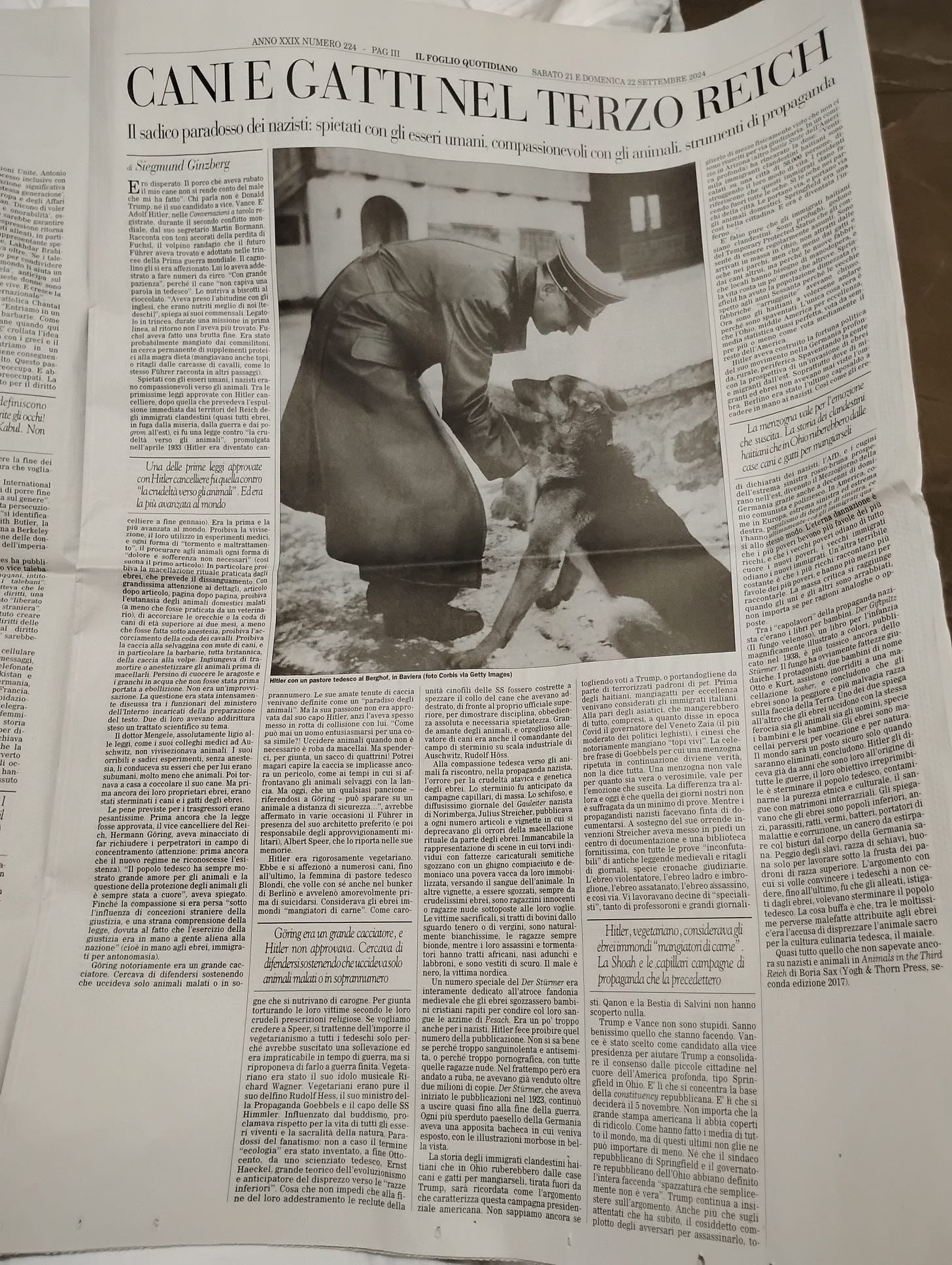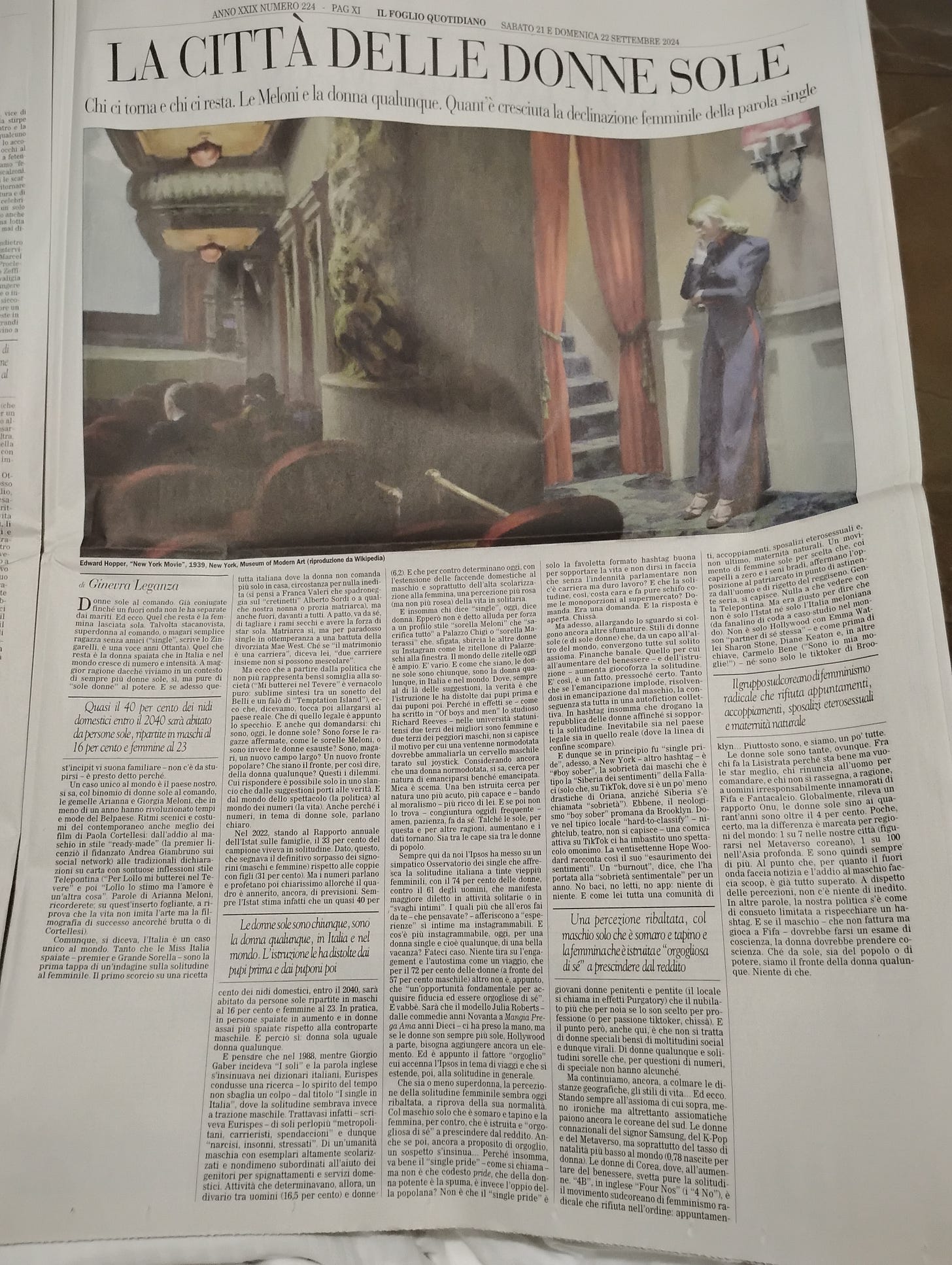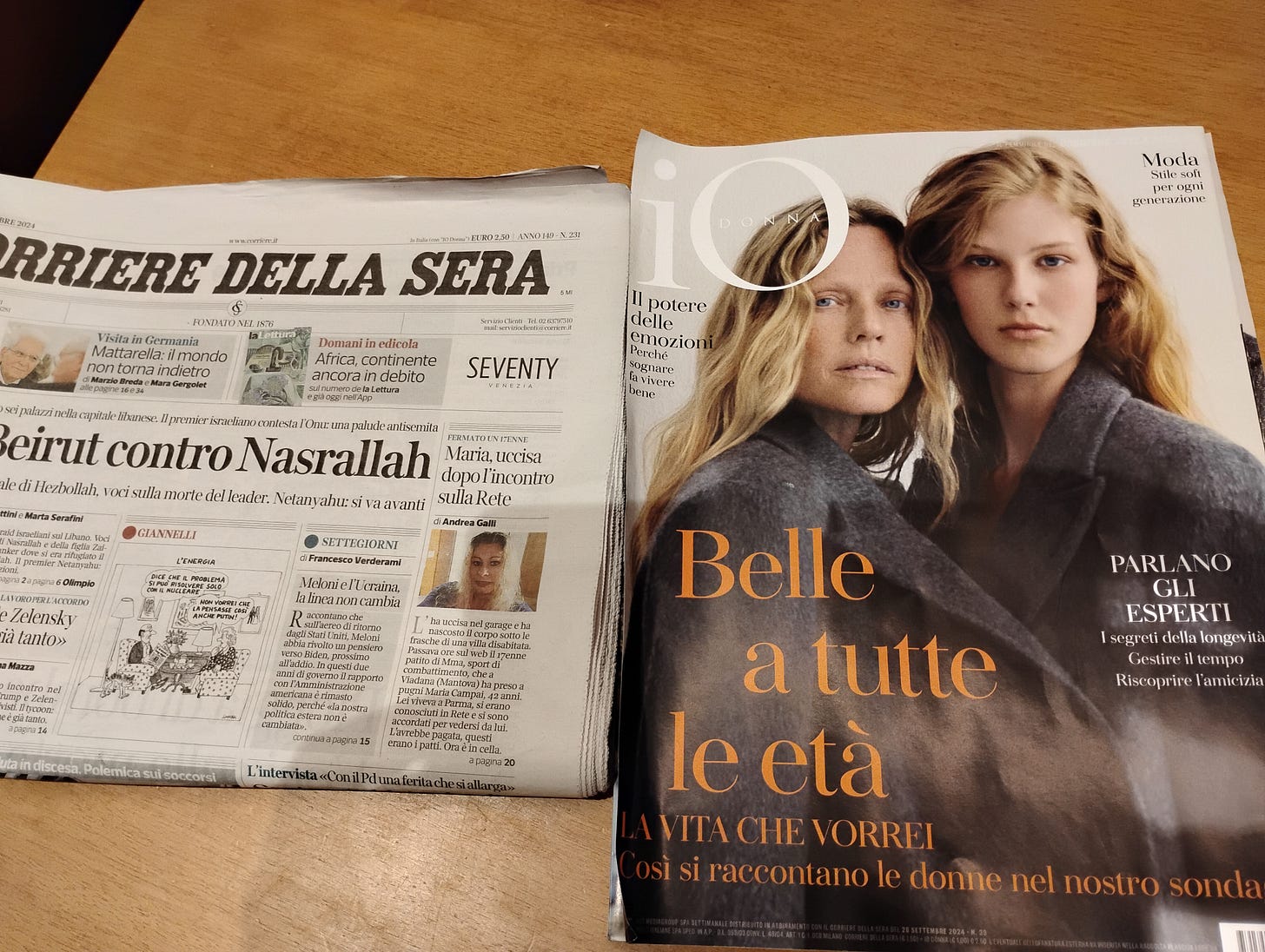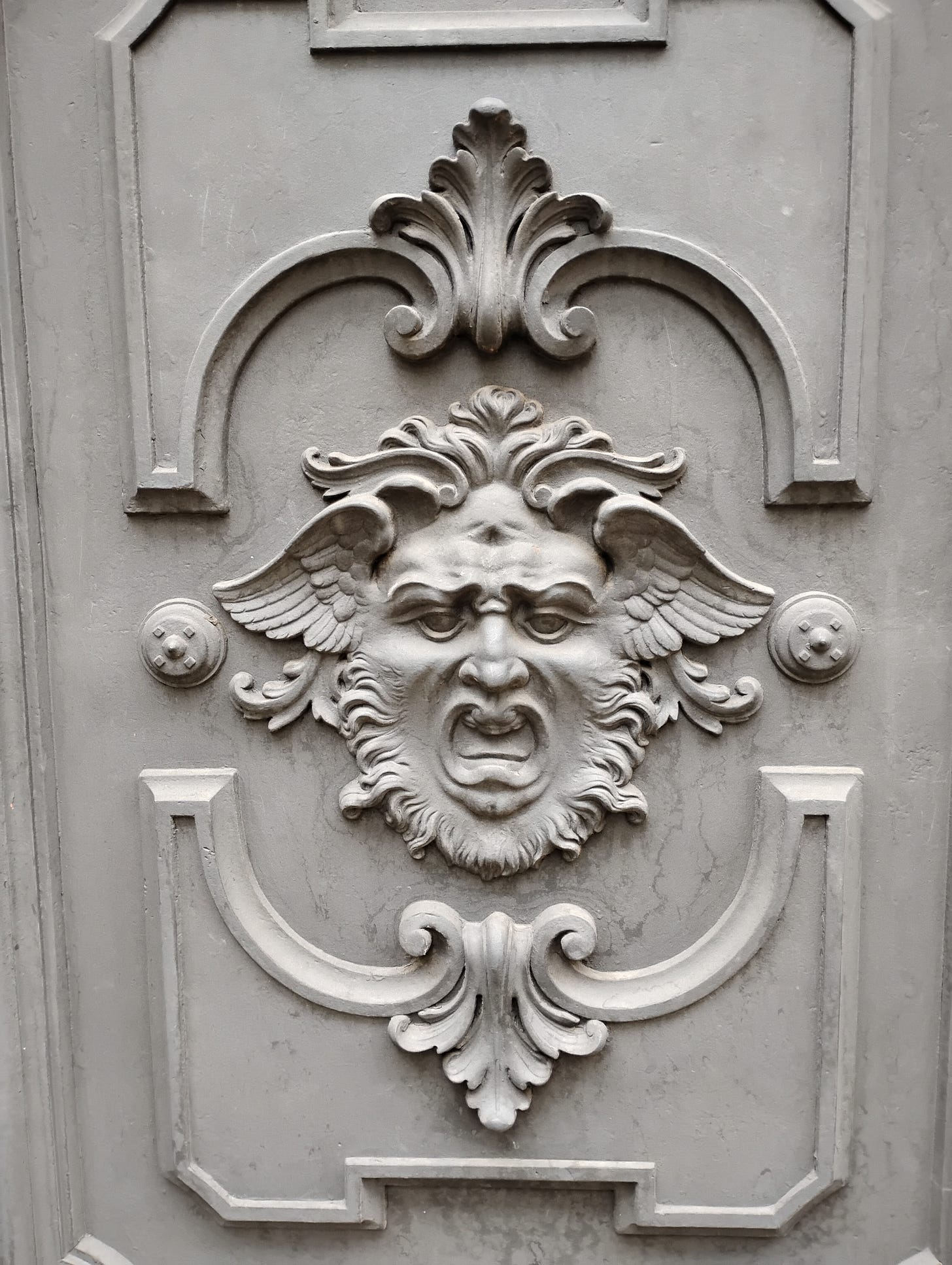
Speaking of culture journalism: as of this month, you can also find me in The Hub, reviewing non-fiction. My first piece is on Raymond B. Blake’s Canada’s Prime Ministers and the Shaping of a National Identity (UBC Press, 2024): How much does a Prime Minister matter, anyway?
Milano, Volume 1
It’s positively offensive to a Canadian, the amount of culture journalism in Italy. How has print journalism here avoided the worst of the ravages of digitization? Smarter executive editors, media bosses and owners? A more purpose-driven and motivated pool of culture journalists and critics? Writing in a language that is not English and therefore not directly competing with American and British content? Advertising reluctant to convert to micro-segmentation and surveillance model overnight, continuing to trust the print? The history of why the internet devastated print journalism in the anglo-world while the countries like France and Italy remained resistant is yet to be written (Traffic tells just some of the story).
I’ve picked up all the major dailies available in Milan last Sunday and was shocked by the acreage of print in evidence. La Repubblica produces a thick culture Sunday supplement called Robinson. The six whole pages (out of 40) about Sally Rooney occupied by Chris Power’s The Times interview translated in Italian are deceptive: the content is not anglo-dominated at all.
Books take up about one half of the supplement, with starred out-of-ten reviews dominating, and a sprinkling of author Q&As. (There is a clear editorial preference for a neatly edited Q&A to the interview-profile in these weekend supplements.) Books in translations are well represented (one French, one Argentinian, and a review of Rita Bulwinkel’s Headshot) among a handful of Italian fiction and non-fiction reviews (one of a book by an Italian philosopher, about her love of swimming). There is a piece by Pope Francis, taken from a chapter that he contributed to a book about refugees crossing by small boats into Italy, “Migrants are my brothers”.
Corriere della Sera Sunday supplement is just absurd: 64 pages of culture journalism of every kind imaginable, criticism, interview-profile, Q&A, reporting from festivals, the comics pages, excerpts. There are a lot of whole-page ads by publishers and museums and galleries announcing forthcoming shows.
Il Sole 24 Ore, Italian response to the Financial Times also printed on salmon-pink paper, publishes a ridiculously high-brow culture section of a Sunday. (I mean this as a compliment.) The FT itself has a decent arts section, but usually doesn’t publish writing this level of seriousness and length.
The opening piece is an essay about a book “exploring the relationship between great literature and economic forces, from Verga to Shakespeare, from Camus to Collodi, with the final section on the literary legacies of the Bible”. Its author, economist Luigino Bruni, traces back the roots of our thinking about money and work, and the ways they’ve been changing over the centuries. Inside the 20 page section, there are, as expected, reviews of policy and economics books, but also essays on arts exhibitions, a piece on the politics and aesthetics of European travelogues in Africa, a leisurely piece on a recently translated Paul Celan collection, and sub-sections called “Science and philosophy”, “Religion and society”, “Culture and environment”. “History and stories” and “Freed time” (which is not a rubric with crossword puzzles and sudoku, you rube, but a space for the reviews of books on sociology of procrastination, Night Studies, and flaneur-ing). There are a handful of half-page and quarter-page ads in the supplement, not a great deal.
And then there’s Il Foglio. The Monocle guide to Milan describes it as a “right of centre daily” which is to miss the point entirely. This is the most unexpected thing I’ve seen in the shape of a print daily: past its front page, the paper welcomes the reader with long-form after long-form essays that may or may not have a hook to something happening in the news.
For example, a piece on the Nazis’ love of animals that lightly touches on the Vance-Trump “migrants eating pets” canard to expand on the various ethnicities’ reputation for being mangiagatti. This is the type of writing that you only find in literary journals and on Substack as well as the new media like UnHerd and the Free Press.
A piece on what exactly is the job of a lover (very briefly touching on the Boccia affair that brought down the culture minister in the Meloni government):
Or this one, on the “the city of women living on their own”, with a passing reference to Meloni herself, who “fired” her boyfriend and father of her child in an Instagram post after recordings of his X-rated flirting at work had been leaked to the media.
There are virtually no ads in the Foglio: I’ve only spotted the two tiny ads on both sides of the paper’s name, and a page-long one for a conference deep inside. What is the business mode of Il Foglio, I’m dying to know. Its wiki page in English is somewhat out of date, citing a “Sunday edition that did not survive” (the pictures above are from l’edizione weekend, which very much exists). The paper appears to be owned by a real estate magnate and still publishes cross-ideological columnizing and personal essays, as was its early intent.
There are of course dailies in Italy that do not publish separate culture sections, but still cover culture in their pages. The more tabloid-y and local Il Giornale, for example, which I also picked up, publishes reviews and general interest culture pieces. (There was a long report early in the paper under the “well-being” heading about a project which puts civilians in the role of a bookseller for a day: the time slots are filled up by the keen Milanese until well into December.) Reviews tend to be shorter and more idiosyncratic, which is fine. I see now on the Giornale website that they have a an opera reviewer too. It’s the predictable anti-Regie whinge but it’s an opera review in a tabloid, I’ll happily take it.
What about the glossy magazines? Well, they still exist, but some of them have thinned out considerably. I’ve leafed though Panorama and L’Espresso and they are half their old size, but still pressing on with investigative and long-reads about the news of the week and month. (Not a massive amount of culture there; Britons have a knack for culture-heavy weeklies and have ushered all of their major magazine brands into the digital era verry nicely, most notably the arts-heavy Spectator, recently purchased by Paul Marshall for £100m.)
At the Malpensa airport on my way back yesterday I thought I’d check what the dailies were up to of a Saturday. Turns out, Corriere pops out a full lifestyle magazine every Saturday, brimming with fashion and design advertising. It’s called iO.
Jostling with it on a mag rack, a chunky La Repubblica culture and entertainment monthly by the name of U, with a black-and-white James Ellroy cover.
I… just don’t know. Is all I can say.
PS: Milano Volume 2, on Milan itself and my list of Must-Sees coming to the Long Player subscribers prossimamente.




